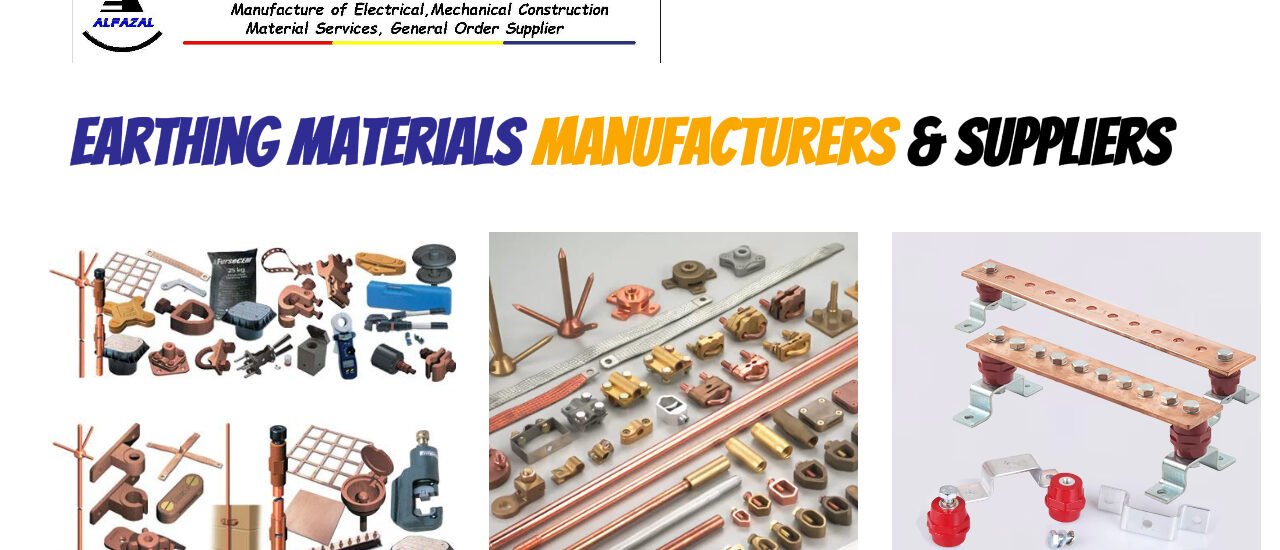Introduction
In every industrial setup, safety and protection are top priorities. One of the most important safety measures is earthing and lightning protection. These systems ensure the safe dissipation of electrical faults and lightning strikes into the ground, protecting both people and equipment from damage. Industries such as power generation, construction, manufacturing, and oil & gas rely heavily on reliable earthing and lightning materials to maintain safe and uninterrupted operations.
What is Earthing?
Earthing, also known as grounding, is the process of connecting electrical systems directly to the ground. This connection helps to:
-
Prevent electric shock to personnel.
-
Protect electrical equipment from damage.
-
Maintain voltage stability.
-
Provide a low-resistance path for fault currents.
A well-designed earthing system ensures that any excess current safely flows into the earth without harming people or property.
Types of Earthing Materials
To build a safe and efficient earthing system, high-quality materials are required. Common earthing materials used in industries include:
-
Copper Rods and Strips
Copper is the most efficient conductor and widely used for earthing because of its high conductivity and corrosion resistance. -
Galvanized Iron (GI) Rods and Plates
GI rods are a cost-effective option and are often used in areas where copper might corrode quickly. -
Earthing Electrodes
These electrodes transfer the electrical charge directly to the ground. They can be plate, pipe, or chemical electrodes depending on the soil type and system design. -
Earthing Wires and Cables
Copper and aluminum cables are used to connect various parts of the system to the earth electrode. -
Earthing Pit and Covers
The earthing pit provides access to the electrode and is usually covered with a concrete or PVC lid for safety and inspection.
Lightning Protection System
Lightning is a natural phenomenon that can cause severe damage to buildings, machinery, and electrical installations. A lightning protection system (LPS) is designed to safely channel the high voltage of a lightning strike into the ground.
Main Components of Lightning Protection System
-
Air Termination Rods (Lightning Rods)
These rods capture the lightning strike and are installed at the highest point of a structure. -
Down Conductors
They safely transfer the electrical energy from the air termination to the earthing system. -
Earth Termination Network
This is the final stage where the electrical energy is discharged into the earth through earthing electrodes. -
Surge Protection Devices (SPD)
SPDs protect electrical and electronic equipment from voltage surges caused by lightning or switching operations.
Importance of Earthing and Lightning Protection in Industries
-
Safety: Protects human life and industrial assets.
-
Equipment Protection: Prevents costly damage to machines and electrical systems.
-
Operational Continuity: Reduces downtime due to electrical faults.
-
Compliance: Meets national and international safety standards.
-
Fire Prevention: Minimizes risks of fire due to electrical short circuits or lightning.
Applications
Earthing and lightning protection systems are used in:
-
Power plants and substations
-
Industrial factories and warehouses
-
Oil refineries and gas plants
-
Telecommunication towers
-
Commercial and residential buildings
Conclusion
A well-designed Earthing and Lightning Protection System is an essential part of every industrial infrastructure. Using premium-quality materials such as copper rods, galvanized electrodes, and surge protection devices ensures long-term reliability and safety. Industries that invest in professional earthing and lightning solutions can protect their valuable assets, maintain safety standards, and ensure uninterrupted productivity.






